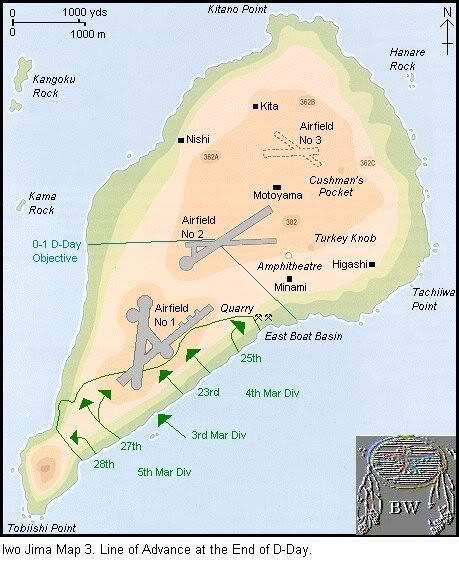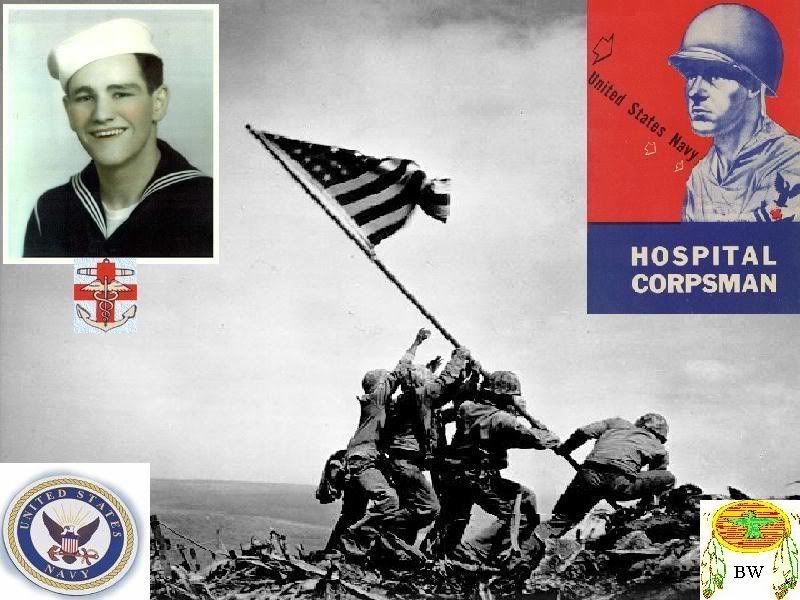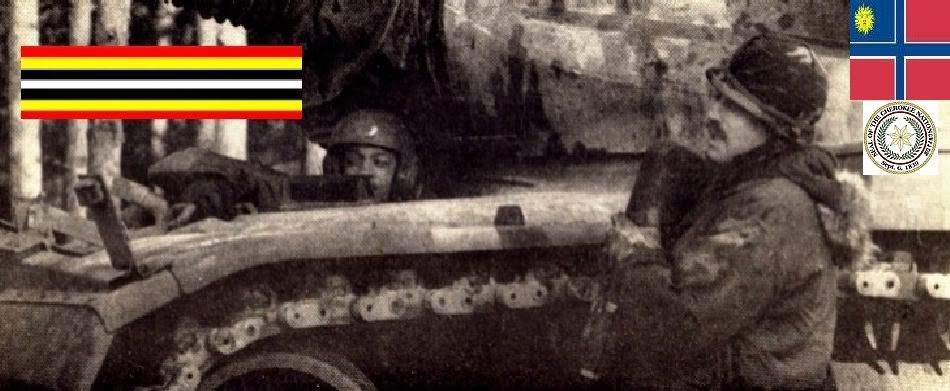|

As momentum built with the turning of the tide in the pacific war, U.S. forces moved ever closer to Japan proper. The final
amphibious landing, a new tactic developed by United States Marines during World War II, on the island of Japan drew nearer.
American B-29 Superfortresses in late 1944 were already conducting bombing raids over Japan. These raids were proving costly
for two reasons: First, no fighter cover was available for the bombers because of the great distance that the aircraft had
to fly; Secondly, in the event that one of the B-29's had an emergency their only options was to ditch in the ocean or attempt
to fly back to U.S. controlled bases in the Marianas - over 1000 miles from Japan. The United States wanted a base that would
be close enough to Japan to provide an emergency landing site and allow fighter cover for the heavy bombers. Iwo Jima, an
island located halfway between the Marianas and Tokyo -- about 670 miles from each, was that base. What was to follow would
be one of the bloodiest battles in Marine Corps history during which almost 26,000 U.S. personnel would be killed or wounded.

United States Navy Corpsman (PM2) John Bradley
Navy Cross Winner
After participating in the famous flag-raising at Mt. Suribachi, John Bradley was awarded the Navy Cross for rushing to a
wounded man's aid under heavy Japanese fire. A few days later, he received several shrapnel wounds in his legs, and was evacuated
from the combat zone to a hospital in Hawaii. John "Jack" "Doc" Bradley (July 10, 1923 — January 11, 1994) was a United
States Navy corpsman during World War II, and one of the six men who took part in Raising the Flag on Iwo Jima. Accompanying
him were SGT Michael Strank, CPL Harlon Block, PFC Ira Hayes, and PFC Franklin Sousley. About halfway up the mountain, they
were joined by PFC Rene Gagnon, who had a larger flag on orders to place it so that it could be seen from great distance.
When he was 19, his father suggested he enlist in the Navy so he could avoid ground combat. However, the Navy chose him to
become a medical corpsman and he was eventually assigned the United States Marine Corps. As a Marine medical corpsmen he took
part in the assault on Iwo Jima, one of the most bitterly fought battles of the Pacific War's island-hopping campaign. In
March 1943, Bradley began his medical corpsman training and was initially stationed at the U.S. Naval Hospital in Oakland.
He was then assigned to the 2nd Battalion, 28th Marines, of the 5th Marine Division, which was being formed at Camp Pendleton,
California.
Warriors Citation
"For extraordinary heroism in action against the enemy at Iwo Jima on February 21, 1945 as a hospital corpsman attached to
a Marine Rifle platoon. During a furious assault by his company upon a strongly defended enemy zone at the base of Mt. Suribachi,
Bradley observed a Marine infantryman fall wounded in an open area under a pounding barrage by mortars, interlaced with a
merciless crossfire from machine guns." "With complete disregard for his own safety, he ran through the intense fire to the
side of the fallen Marine, examined his wounds and ascertained that an immediate administration of plasma was necessary to
save the man's life. Unwilling to subject any of his comrades to the danger to which he had so valiantly exposed himself,
he signaled would-be assistants to remain where they were. Placing himself in a position to shield the wounded man, he tied
a plasma unit to a rifle planted upright in the sand and continued his life saving mission. The Marine's wounds bandaged and
the condition of shock relieved by plasma, Bradley pulled the man thirty yards through intense enemy fire to a position of
safety. His indomitable spirit, dauntless initiative, and heroic devotion to duty were an inspiration to those with who he
served and were in keeping with the highest tradition of the United States Naval Service." Pharmacist's Mate Second Class
Bradley was awarded the following decorations and awards:
PM2 Bradley's awards and decorations at the time of his discharge from the Navy.
• Navy Cross
• Purple Heart
• Presidential Unit Citation with one star (for Iwo Jima)
• American Campaign Medal
• Asiatic-Pacific Campaign Medal with one battle star (for Iwo Jima), and;
• World War II Victory Medal
From: historical accounts & records


LINK TO BRAVEHORSE WARRIORS VOLUME TWO
|

